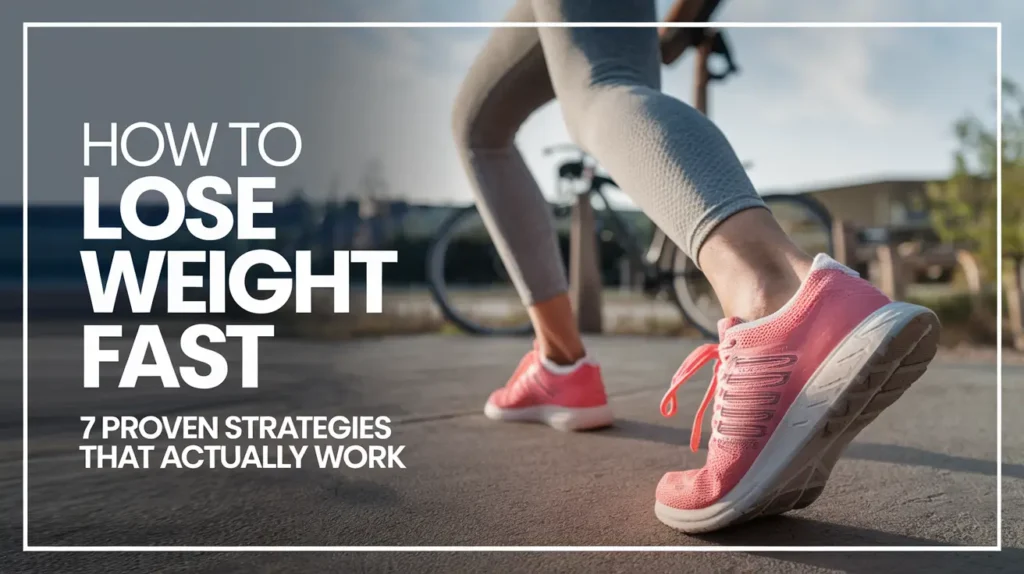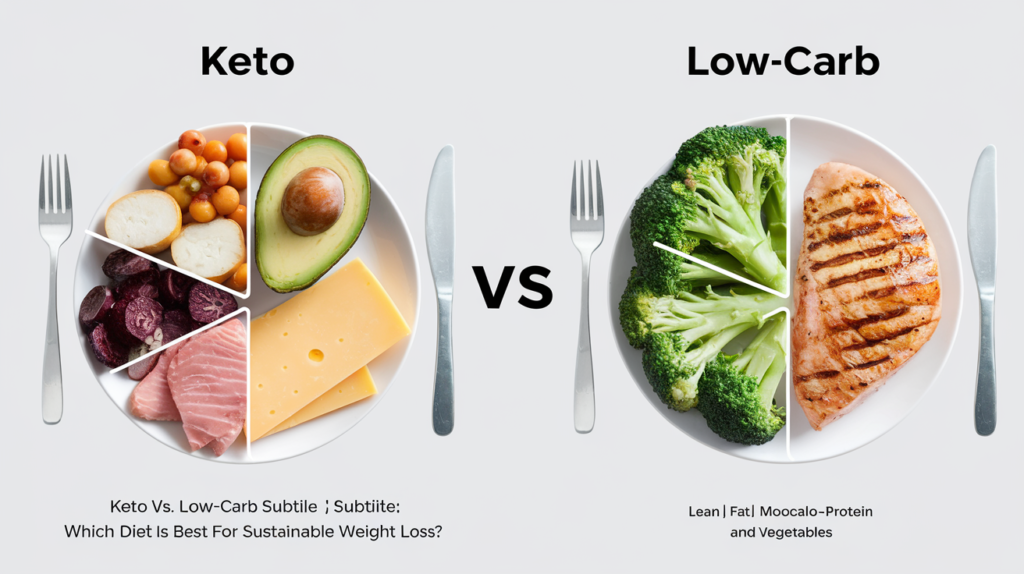Weight loss is a common goal for many people, but understanding the science behind how the body burns fat can make the process much easier. Knowing how your body converts stored fat into energy, what factors influence this process, and how to optimize fat burning can help you achieve lasting results. In this article, we’ll dive into the science of weight loss, explaining how your body burns fat and what you can do to support that process.
What is Fat?
Fat is an essential component of your body that stores energy and helps with insulation and cell function. Not all fat is the same, and different types of fat play different roles in your body.
Different Types of Fat
White Fat
White fat, or white adipose tissue, is the type most people are familiar with. It stores energy and produces hormones like leptin, which helps regulate hunger.
Brown Fat
Brown fat generates heat by burning calories, which is why it’s considered a “good” type of fat. It’s more abundant in babies but is present in small amounts in adults.
Visceral Fat
Visceral fat is stored around your internal organs and is associated with higher health risks, such as heart disease and diabetes.
The Role of Fat in the Body
Fat is a storage system for excess energy. When you consume more calories than your body needs, the extra energy is stored as fat. This stored fat is later used for energy when you are in a caloric deficit or when energy demands exceed the immediate intake.
The Basics of Weight Loss
Caloric Deficit: The Key to Burning Fat
The fundamental principle of weight loss is simple: you must consume fewer calories than your body uses. This creates a caloric deficit, forcing your body to tap into fat stores for energy.
Why Weight Loss and Fat Loss are Not the Same
Weight loss refers to a decrease in overall body weight, including water, muscle, and fat. Fat loss, on the other hand, focuses on reducing the amount of fat in your body. It’s possible to lose weight without burning fat, especially if you’re losing muscle mass or water weight.
How the Body Uses Stored Fat for Energy
When your body is in a caloric deficit, it begins to break down fat cells through a process called lipolysis. The stored fat is released into the bloodstream, where it is transported to cells and used for energy.
Metabolism and Fat Burning
Understanding Basal Metabolic Rate (BMR)
Your BMR is the number of calories your body needs to maintain basic physiological functions, such as breathing and digestion, at rest. The higher your BMR, the more calories you burn, even when you’re not active.
How Physical Activity Boosts Metabolism
Exercise increases your metabolism by requiring your body to use more energy during and after physical activity. The more intense the activity, the longer your metabolism stays elevated, a phenomenon known as the “afterburn effect.”
The Role of Hormones in Fat Metabolism
Hormones like insulin, cortisol, and thyroid hormones play a significant role in fat storage and burning. For example, insulin regulates blood sugar levels, while cortisol, the stress hormone, can promote fat storage if consistently elevated.
The Process of Fat Burning
Lipolysis: Breaking Down Fat Cells
Lipolysis is the process by which fat cells are broken down into free fatty acids and glycerol, which are then released into the bloodstream for energy.
Beta-Oxidation: Turning Fat into Usable Energy
Once fat is broken down, it enters the mitochondria of cells, where beta-oxidation occurs. This is the process that converts fatty acids into ATP (adenosine triphosphate), the energy currency of the body.
The Role of Mitochondria in Fat Burning
Mitochondria, often referred to as the powerhouse of the cell, are responsible for converting fat into energy. The more mitochondria you have, the more efficiently your body can burn fat.
Factors Affecting Fat Burning
Age and Fat Burning Efficiency
As you age, your metabolism naturally slows down, making it harder to burn fat. However, staying active and maintaining muscle mass can help counteract this decline.
Muscle Mass and Metabolism
Muscle tissue burns more calories at rest than fat tissue, so the more muscle you have, the higher your metabolic rate. Strength training is a great way to build muscle and boost fat burning.
Diet and Its Impact on Fat Burning
What you eat has a direct impact on how efficiently your body burns fat. A diet rich in whole foods, lean proteins, and healthy fats supports fat loss, while processed foods and sugary drinks can hinder your progress.
The Influence of Sleep and Stress
Poor sleep and high stress levels can negatively affect fat burning. Lack of sleep disrupts hormones that regulate hunger and metabolism, while chronic stress can lead to increased fat storage, particularly around the abdomen.
Exercise and Fat Burning
The Difference Between Cardio and Strength Training
Cardio exercises, like running and cycling, burn a lot of calories during the activity. Strength training, on the other hand, builds muscle, which increases your resting metabolic rate, helping you burn more calories even when you’re not working out.
High-Intensity Interval Training (HIIT) vs. Steady-State Cardio
HIIT workouts involve short bursts of intense activity followed by rest periods, which can increase fat burning both during and after exercise. Steady-state cardio, while effective for burning calories, doesn’t produce the same prolonged fat-burning effects as HIIT.
How Muscle Building Helps Burn Fat
Muscle tissue is metabolically active, meaning it requires energy to maintain. Building more muscle helps increase your overall calorie expenditure, even at rest, making it easier to burn fat.
Nutrition for Fat Loss
The Importance of a Balanced Diet
A balanced diet that includes a mix of proteins, fats, and carbohydrates is essential for fat loss. Each macronutrient plays a specific role in maintaining energy levels and supporting metabolism.
Macronutrients and Their Role in Fat Loss
Protein
Protein is crucial for muscle repair and growth. It also helps keep you feeling full, reducing the likelihood of overeating.
Carbohydrates
Carbohydrates are your body’s preferred source of energy. Choosing complex carbs, like whole grains and vegetables, can help keep energy levels stable.
Fats
Healthy fats, such as those found in avocados and nuts, support hormone production and help your body absorb essential nutrients.
Foods That Boost Metabolism
Certain foods, like green tea, chili peppers, and high-protein foods, have been shown to increase metabolism and support fat loss.
Common Myths About Fat Burning
Spot Reduction: Can You Burn Fat in Specific Areas?
Contrary to popular belief, you cannot target fat loss in specific areas of the body. Fat is burned systemically, meaning your body decides where to lose fat from based on genetics and other factors.
Sweating More Doesn’t Mean You’re Burning More Fat
Sweating is your body’s way of cooling itself down, not a direct indicator of fat burning. You can burn fat without breaking a sweat.
Starvation Mode and Weight Loss
While prolonged calorie restriction can slow your metabolism, short-term caloric deficits don’t put your body into “starvation mode.” The key is to create a moderate caloric deficit that you can sustain over time.
How Long Does It Take to Burn Fat?
Understanding Fat Loss Timelines
Fat loss takes time, and the speed at which you burn fat depends on various factors, including your metabolism, activity level, and diet.
Why Consistency is Key
Consistency in both diet and exercise is the most important factor for long-term fat loss. Quick fixes and extreme diets may yield short-term results but often lead to weight regain.
Conclusion
Understanding how your body burns fat is essential for achieving and maintaining weight loss. By focusing on creating a caloric deficit, building muscle, and making healthy food choices, you can support your body’s fat-burning processes. Remember that fat loss takes time, and staying consistent with your efforts will lead to sustainable results.
FAQs
Can you lose fat without losing weight?
Yes, it’s possible to lose fat while maintaining or even gaining weight, especially if you are building muscle at the same time.
What is the best type of exercise for fat loss?
A combination of cardio and strength training is the most effective for fat loss, as it burns calories and builds muscle.
How do I know if my body is burning fat?
You may notice changes in body composition, such as losing inches or fitting into smaller clothes, even if the scale doesn’t change much.
Why is my fat loss slowing down?
Fat loss may slow down as your body adapts to your current routine. Changing your workout or diet can help break through plateaus.
What foods should I avoid to burn fat faster?
Processed foods, sugary drinks, and high-fat junk foods can hinder fat loss by providing empty calories and slowing your metabolism.



